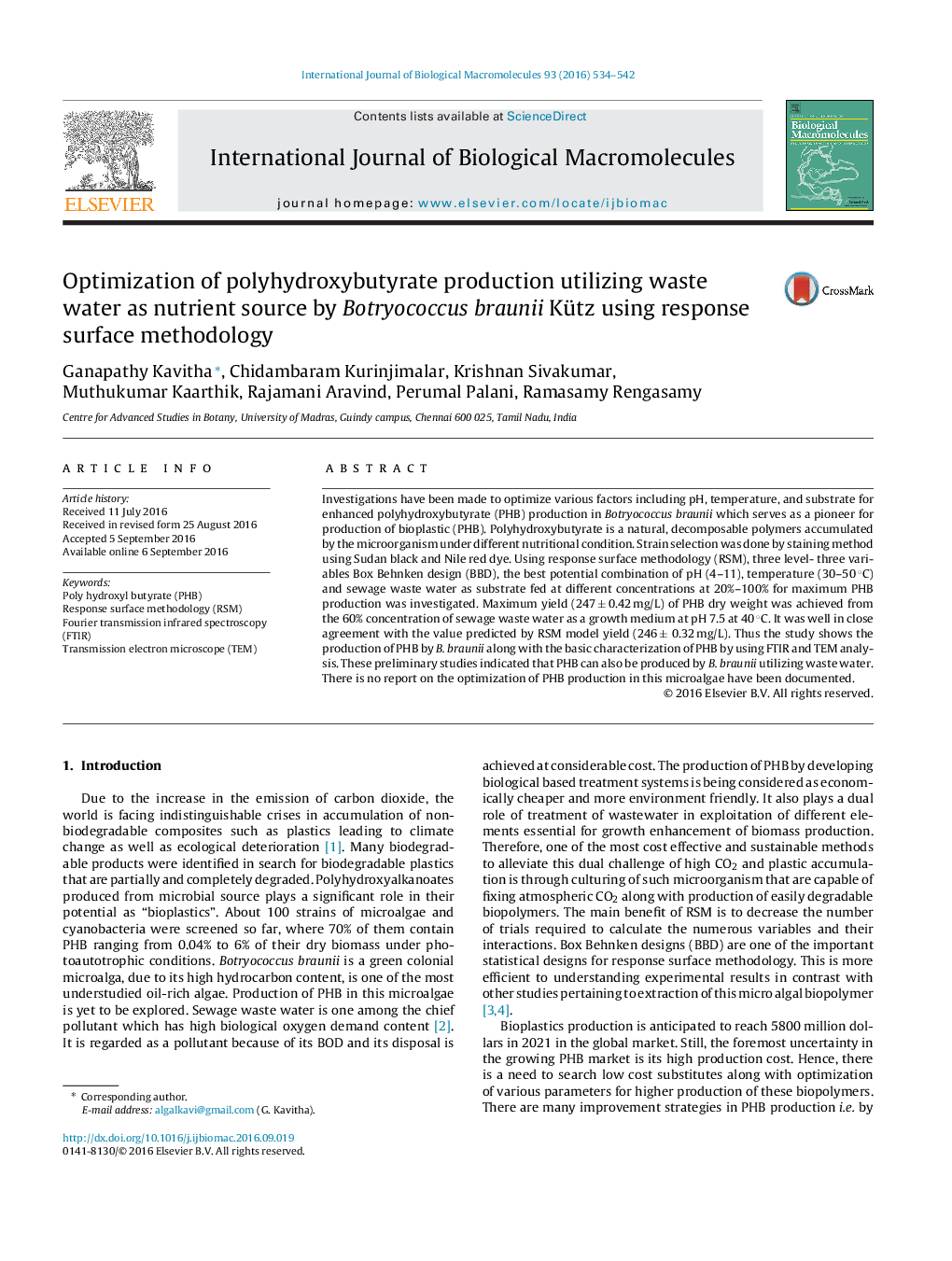| Article ID | Journal | Published Year | Pages | File Type |
|---|---|---|---|---|
| 6481673 | International Journal of Biological Macromolecules | 2016 | 9 Pages |
â¢Optimization of PHB using RSM was first time reported in Botryococcus braunii.â¢PHB obtained was confirmed by using TEM and FTIR analyses.â¢Isolation of potent biopolymer from B. braunii utilizing sewage water is reported.
Investigations have been made to optimize various factors including pH, temperature, and substrate for enhanced polyhydroxybutyrate (PHB) production in Botryococcus braunii which serves as a pioneer for production of bioplastic (PHB). Polyhydroxybutyrate is a natural, decomposable polymers accumulated by the microorganism under different nutritional condition. Strain selection was done by staining method using Sudan black and Nile red dye. Using response surface methodology (RSM), three level- three variables Box Behnken design (BBD), the best potential combination of pH (4-11), temperature (30-50 °C) and sewage waste water as substrate fed at different concentrations at 20%-100% for maximum PHB production was investigated. Maximum yield (247 ± 0.42 mg/L) of PHB dry weight was achieved from the 60% concentration of sewage waste water as a growth medium at pH 7.5 at 40 °C. It was well in close agreement with the value predicted by RSM model yield (246 ± â0.32 mg/L). Thus the study shows the production of PHB by B. braunii along with the basic characterization of PHB by using FTIR and TEM analysis. These preliminary studies indicated that PHB can also be produced by B. braunii utilizing waste water. There is no report on the optimization of PHB production in this microalgae have been documented.
